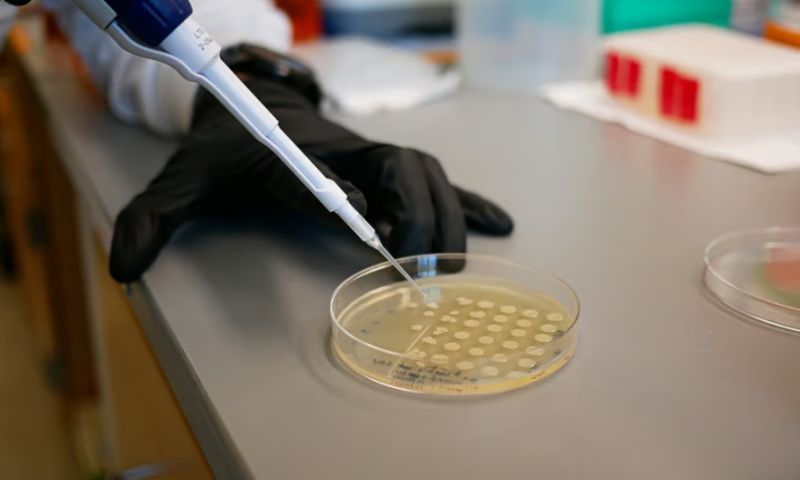Deep in the bellies of cows are tiny microbes that ferment grass and hay, breaking it down into fatty acids that serve as bovine energy—and into planet-warming methane gas. The gas eventually makes its way to the atmosphere via cow burps. The 980 million or so cows around the globe account for about 27% of all methane emissions linked to humans.
Scientists and companies are coming up with plenty of ways to curb cow methane, from simply changing their food source to breeding “green” animals. Thanks to a $70 million grant from the TED Audacious Project, scientists from the Jennifer Doudna, Ph.D.-founded Innovative Genomics Institute hope to soon be working on another solution: editing the genomes of cows’ microbiota.
“I think the potential here is enormous,” Brad Ringeisen, Ph.D., the institute’s executive director, told Fierce Biotech Research in an interview. “This technology—if we’re able to develop it and make it work—will be coming of age at a perfect time for the world.”
The program is the largest scientific initiative the Audacious Project has funded to date, according to an April 17 announcement from the institute. At its helm are Nobel Prize-winning CRISPR/Cas 9 inventor Doudna and lauded environmental scientist Jill Banfield, Ph.D. Banfield pioneered the field of metagenomics, which uses genome sequencing techniques to comprehensively study the genetic makeup of all the organisms within an environmental sample.
But before the scientists can edit livestock microbiomes, they’ll need to figure out how to get the tools to do so inside the bacteria. While CRISPR/Cas 9 genome editing is “pretty mature,” Banfield said, it hasn’t been widely applied in microbes. That’s largely because no one has yet cracked the code on how to efficiently deliver CRISPR/Cas 9 into bacterial cells that exist within complex microbial communities, she explained, though she and Doudna recently published a proof-of-concept study in Nature Microbiology detailing a possible method.
“The tool development challenges don’t lie so much in the actual editing machinery, but how to get the editing machinery into enough cells within a microbial community and have it perform its function,” Banfield said.
The first phase of the project will look to viruses to do just that. Viral DNA and plasmids are currently used to deliver CRISPR/Cas 9 systems into eukaryotic and plant cells, and they can be used in bacteria if they’re grown in pure cultures. But the same plasmids won’t work for microbes that can’t be grown in the lab, which includes the majority of the ones in the environment and even many in our own bodies. New plasmids will need to be developed that take into account the complex interactions between organisms within the microbiome, Banfield explained.
“Once again, we need to adapt nature to solve a problem,” she said. Outside the project, her lab is working on combining cheaper, faster short-read sequencing with more thorough long-read sequencing technologies to characterize microbial genomes within the context of the greater microbiome.
“Then we have the full recipe book for every organism that exists in the microbiome of interest, and extra information about which ones are metabolically dependent upon one another,” Banfield said. “And I think that’s where the editing tools can come in and really start to revolutionize health and greenhouse gas emissions strategies.”
Once the researchers are able to deliver editing machinery into the microbes, they’ll then look at how to get the treatment successfully to the cow’s digestive system. That will most likely happen in the form of an oral pill that’s given early in the animal’s life, when there’s the greatest potential for making long-lasting changes to its gut bacteria, Ringeisen said.
“That way we can create a stable, low-methane microbiome,” he explained. “We want a permanent solution.”
That contrasts with the way some companies, like British-Swiss startup Mootral, are approaching the problem. Their product, a supplement designed to reduce methane emissions during the fermentation process, is added to the cows’ feed and given throughout their lifetimes. While such a strategy does indeed appear to change their microbiomes enough to reduce methane emissions, Ringeisen thinks it’s too expensive and impractical to scale.
“There are a billion cows in the world. Many of them are in low or middle income countries, and (those farmers) can’t afford the supplements,” he said. “And a lot of them graze—you can’t give a grazing cow a supplement every day. So we’re really hoping that if you treat a calf that it’s scalable across the entire globe.”
The team hopes to be able to test their idea in cows by year four or five of the seven-year grant period. They’ll then look to using their editing technology to treat or prevent human disease. The composition of the gut microbiome has been linked to a range of conditions, from depression and Alzheimer’s disease to Type 2 diabetes. Being able to alter the organisms there could open up new therapies that are far more efficacious than the current route of trying to change the microbiome with probiotics.
Beyond that, the potential applications are limitless. Once the grant period is up, Banfield said, “the next challenge is going to be, where do we go next?”
“We picked two [ideas] where we could see a real, realistic path that was compatible with the program’s seven years,” she explained. “But there are so, so many other applications.”

